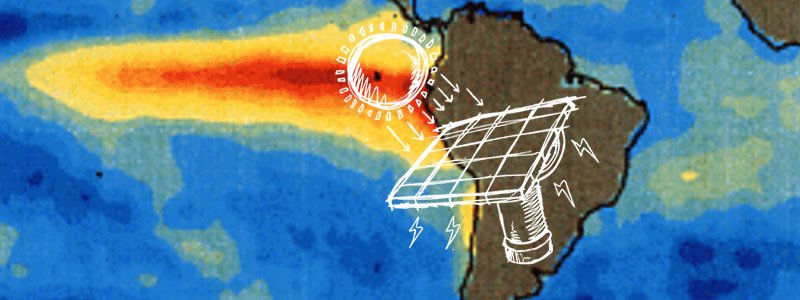
The El Niño weather phenomenon could drive Latin American economies with a high dependence on hydro to ramp up PV procurement instead, analysts have confirmed. “It is one of the reasons why Brazil stepped up its solar auctions last year,” said Josefin Berg, senior analyst for solar demand at IHS Technology.
Meanwhile Jenny Chase, solar insight manager at Bloomberg New Energy Finance, said that in her opinion diversifying away from hydro “may well be a driver, along with the falling price of solar, for increasing the size of tenders in Latin America.”
The El Niño weather pattern, which involves a warming of the eastern equatorial Pacific Ocean, has led to runaway drought across much of Latin America since 2014. One of the hardest-hit countries has been Venezuela, where Guri, the nation’s largest reservoir, is in danger of collapsing due to low water pressure. The country as had to introduce electricity rationing and reduced working hours as a result.
However, Brazil, Colombia and Chile have also felt the effects of the drought. Colombian officials were last month reported to be readying for electricity rationing similar to that seen in Venezuela. The Latin America region is particularly susceptible to drought because of a high level of reliance in hydro power across many of its major economies.
According to World Bank figures, penetration of hydro in the power mix is at 46% across Latin America and the Caribbean as a whole, rising to an average of 50% in the developing countries of the region. But at least eight Latin American countries have a hydro penetration significantly above 50%, including Paraguay at 100%, Panama at 72%, Uruguay at 70%, Brazil and Colombia at 69%, Venezuela at 68% and Costa Rica at 67%.

All of these could be candidates for diversification into solar energy. “It would make sense since sun and rain tend to be anti-correlated,” noted Chase.
Another reason for considering a switch from hydro to solar is that while both types of renewable energy offer a low levelised cost of energy, building new dams is quite capital intensive compared to installing PV.
Data from the International Renewable Energy Agency, for example, shows the installed cost per kilowatt for hydro in Brazil ranges between around USD$1,500 and $2,500, which can now be undercut by PV. Solar is also easier in terms of permits.
Events in Latin America could be a pointer for policy makers in other hydro-dependent nations as global warming takes a hold. According to the World Economic Forum (WEF): “Global water crises are the biggest threat facing the planet over the next decade.”
The main water-related challenges in the Forum’s Global Risks 2015 report are linked to access to freshwater for drinking and agriculture. But “beyond water for food and drink, increasing manufacturing and consumer markets are heightening the demand for water to produce electricity,” said the WEF.
It cited International Energy Agency figures that predict the need for water consumption in power generation is set to increase by 85% within 20 years.
